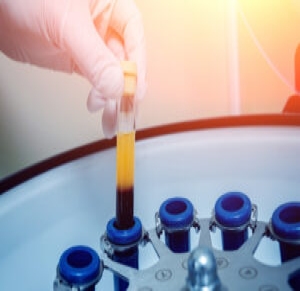Platelet-Rich Plasma (PRP) therapy is another attempt to harness the regenerative power of the human body to treat injuries and accelerate healing processes.
The idea is to extract the patient’s platelets, create concentrated plasma, and inject it back to the affected body part. The assumption is that this would accelerate the healing of musculoskeletal injuries.
Using and even training the human regenerative system to heal injuries and shorten the postoperative period is not a new approach. Medical science has been trying to use the power of human organisms to regenerate itself for decades. PRP therapy is one of such efforts.
What are Platelet-Rich Plasma (PRP) Injections?
A PRP injection contains the patient’s concentrated autologous thrombocytes mixed into a minimal amount of the patient’s plasma. PRP injections have several names. Among them are:
- Platelet concentrate (PC)
- Autologous platelet gel
- Plasma rich in growth factors (PRGF)
It takes several phases to create a PRP injection. First, the patient’s blood is drawn and anti-coagulated with citrate dextrose. After that, blood is centrifuged using two spins. During the first, hard spin, the platelet-poor plasma (PPP) separates. The additional, soft spin further separates red blood cells and PRP.
Being the heaviest, PRP gathers at the bottom of the vessel and becomes easy to harvest. Before application, PRP is mixed with topical bovine thrombin and calcium chloride. This activates clotting and turns the concentrated PRP into a gel.
Since the process takes a little over 10 minutes, it is usually performed immediately before the therapy. Such PRP injection contains up to 5 times higher concentration of platelets than the native plasma does.
How Does PRP Work?
Platelets or thrombocytes boost the healing of musculoskeletal tissues due to several properties:
- They play an essential role in hemostasis – Hemostasis involves primary and secondary hemostasis and fibrinolysis. Platelets are crucial for the primary hemostasis. Once a vascular injury occurs, sub-endothelium is exposed, and platelets can tether to matrix components. Tethering turns into adhesion, and platelets form a plug that prevents blood loss.
- They are rich in growth factors – Platelets contain: vascular endothelial growth factor (VEGF), transforming growth factor-beta (TGF-β), platelet-derived growth factor (PDGF), insulin-like growth factor (IGF), and platelet-derived angiogenic factor (PDAF). Growth factors are crucial for regenerative processes and healing.
- They release other substances essential for wound healing – sphingosine 1-phosphate, fibronectin, vitronectin, and others.
The release of the growth factors doesn’t happen spontaneously. It has to be triggered. More precisely, growth factors are released when different substances stimulate platelets.
Some of them include collagen, thrombin, and calcium chloride. That is why these substances are added to the PRP just before the injection. Their role is to activate the platelets and make the therapy more effective.
What Are the Advantages of Using PRP?
There are several reasons why PRP makes an excellent therapy choice when it comes to healing musculoskeletal injuries:
- PRP can speed up both soft tissue and bone healing.
- It can improve graft vascularization efficiency.
- Reduces postoperative morbidity.
- Facilitates graft materials handling and packing into a grafting site.
The questions about PRP efficiency usually involve whether it is more efficient to use autologous PRP or not. In practice, using the patient’s biological material has been proven as more valuable than recombinant content.
The reason why the autologous PRP is more efficient than treating the injury with individual recombinant factors is that autologous PRP releases multiple growth factors, as well as differentiation factors.
Additionally, there are no risks of immune reaction, disease transmissions, or cross-reactions. In simple words, it’s safer and more efficient.
How Is PRP Used?
In most cases, PRP is injected. PRP injections can be combined with local anesthetic and administered to the inflamed tissue. Patients report increased pain that lasts around ten days after this procedure. The positive effects of PRP are visible after several weeks.
In some cases, PRP is administered during the surgery. This usually occurs during tendon surgeries. PRP is prepared in a way that allows it to be applied to torn tendon tissue directly. This method is supposed to promote healing.
Which Injuries Are Treated with PRP?
PRP is used for the injuries and conditions affecting the bones, tendons, ligaments, and muscles. The most commonly treated conditions are:
- Arthritis
- Fractures
- Chronic tendon injuries
- Acute muscle injuries
- Ligament injuries
- Carpal tunnel
- Rotator cuff injury
- Nerve injuries
- Cosmetic surgeries
The advantages of PRP therapy involve its affordability and availability. It takes roughly 12 minutes to prepare a PRP injection from a patient’s blood. However, PRP is not without its downfalls. Most of them stem from the fact that more research needs to be conducted to prove the efficiency and the safety of PRP.






